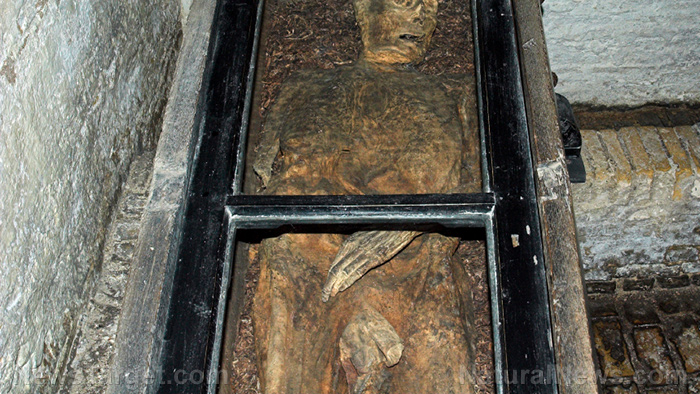
Marine salvagers got a welcome surprise when their sonar picked up an anomaly on the shallow seafloor of the North Sea recently. What they initially mistook for a shipping container turned out to be a sunken Dutch wooden sailing ship from the 16th century.
Even better, the 500-year-old shipwreck held tons of copper. Experts believed that the metal cargo was destined to get minted into the then newly introduced copper currency.
In January 2019, a North Sea storm swept shipping containers off the deck of the cargo ship MSC Zoe. Salvage teams set out to look for the valuable steel containers by pinging the seabed with ship-mounted sonar. Whenever they found a likely target, they used a mechanical grab to recover the object.
One group got a strange sonar return from the seafloor north of Terschelling, a Dutch island in the northern Netherlands. Believing the contact to be one of MSC Zoe's missing shipping containers, the salvagers sent their grab down.
Instead of a steel container, their mechanical grab came up with a load of centuries-old timbers — and nearly five tons of copper plates. The salvagers ceased operations and called in experts. (Related: The world’s first polluted river is over 7,000 years old, researchers find.)
Salvagers accidentally discover 16th-century Dutch shipwreck
In an interview, Cultural Heritage Agency of the Netherlands official Martijn Manders remarked that the lucky find might be the oldest shipwreck in the Dutch zone of the North Sea.
The Terschelling ship measured 100 feet (30 meters) in length. Analysis of the timbers indicated it got constructed during the 1540s.
The Dutch shipwrights of the period were in the middle of a technological revolution. They began abandoning the "clinker" approach of building the hull with overlapping planks, a style that dated back to medieval times and produced the famous longboats of the Vikings.
Instead, the shipbuilders began taking up the "carvel" approach, which came from the Mediterranean and got its name from the famous Portuguese caravel. The new technique nailed flat planks to a wooden frame.
The carvel style made it possible to build larger ships with sturdier hulls that resisted leakage even in heavy seas. Dutch sailing ships became capable of sailing around the world for exploration, trading, and warfare.
Manders called the shipwreck a missing link in Dutch shipbuilding history. Analysis of its timbers indicated the presence of a temporary framework of external planks. Shipwrights developed this transitional style during the shift from clinker shipbuilding techniques to the carvel approach.
An important representative of Dutch history during the 1500s
Researchers theorized that the ship came from the Baltic Sea. Its intended destination might have been Antwerp, a Dutch port during the 1500s that became a part of modern-day Belgium.
Its cargo of copper plates might have been one of the first European uses of the metal for minting currency. Stamps identified their maker as the Fugger (Fuegger) banking family of Germany.
Manders added that chemical tests of the plates confirmed a match with the metal used in the first copper coins in the Netherlands. Dutch cities adopted copper currency during the 16th century as a cheaper substitute for barter and costlier coinage of gold and silver.
The Terschelling shipwreck provided tantalizing glimpses into Dutch history. It represented a massive leap in ship design and construction, the country's economic boom, and the adoption of copper currency.
“So we have three things that make this such an exceptional ship, without having dived on the ship yet,” Manders conveyed.
Luckily, the timbers appeared to be in good condition. They showed no signs of ship-worms, the traditional bane of wooden ships. Researchers plan to dive to the shipwreck starting in late 2019.
Sources include:
Please contact us for more information.





















